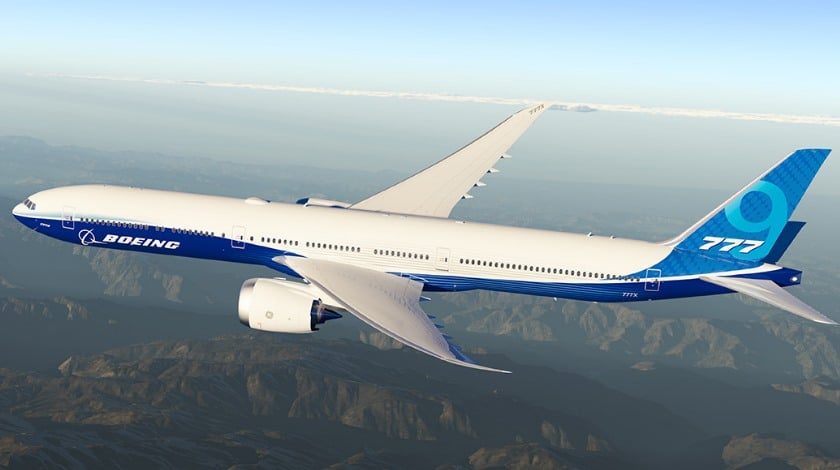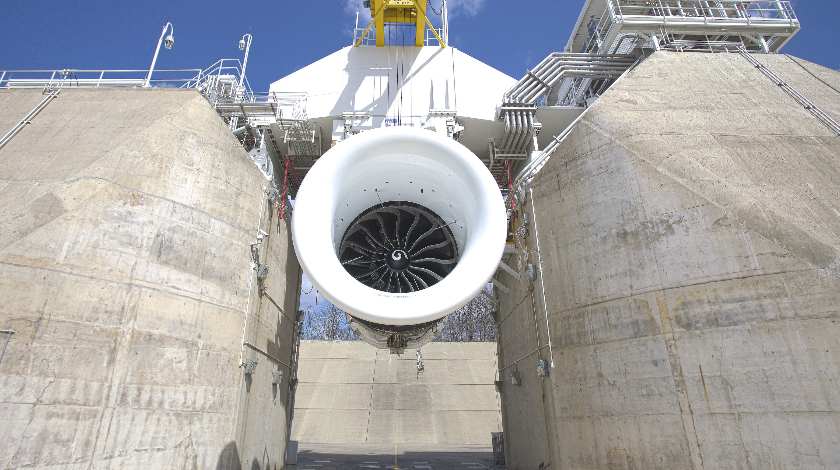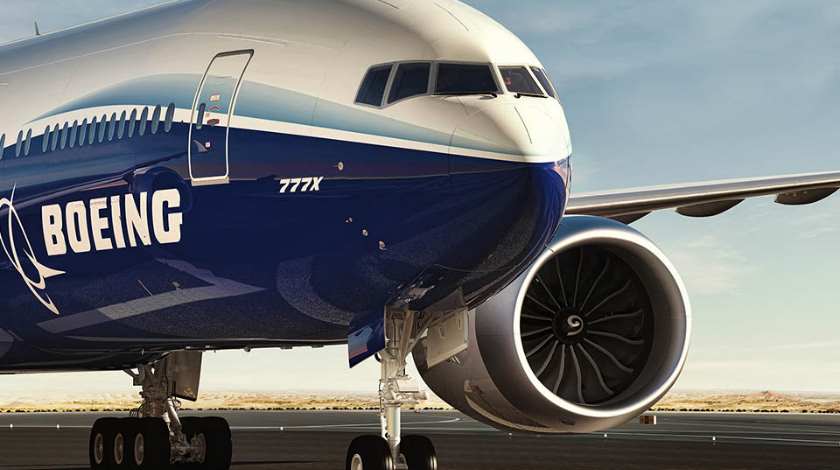Photo: Boeing
Reading Time: 2 minutesSo much excitement around the new Boeing 777X but so little information on its progress. Especially now, when Boeing struggles to bring 737 MAX turbulence to an end and restore trust of its clients in safety of its aircraft.
If someone thinks that nothing is going on with a new plane, in fact, it is wrong. Boeing is actively working on its newcomer to near its entrance into service.
“Secret” Debut
In the wake of crashes in Africa and Indonesia, the planned public introduction of a new 777X was postponed. Instead, the aircraft manufacturer held a small ceremony for its employees to reveal the plane.
Boeing staff was able to explore the exterior of a fully assembled 777-9 plane. The largest of two models of Boeing 777X family. Just imagine, the 777-9 is 77 meters long! It means that this aircraft is even longer than Boeing’s 747 “the Queen of Skies”, the length of which is 76.3 meters.
Boeing 777-9 aircraft will be able to carry from 400 to 435 passengers in two classes and to operate on the routes of over 14,000 km. Powered by the largest engines for commercial aircraft, GE9X, 777X plane has already got the title of the largest twin-engine aircraft in the world.

Ground Tests in Progress
Boeing is not very talkative about the process, though. But it is clear that it is progressing towards the first flight. According to Sam Chui, recently Boeing was preparing its 777X for fatigue testing. This means that the planemaker is confidently moving towards major tests and, of course, the first flight of the plane.
Also, recently the FAA announced that the Boeing Company will have to complete specific tests for the 777-9 aircraft to prove that its fuel tanks are able to withstand debris from tires impacting on the surface. This special testing is introduced particularly for this aircraft model. Wondering why?
The secret is in unusual design feature of the 777-9 – “composite fuel tanks that may be subject to tire-debris penetration of the fuel tanks. The applicable airworthiness regulations do not contain adequate or appropriate safety standards for this design feature”, the Federal Register reports.
The special conditions were introduces because “tire-debris impact to any fuel tank or fuel-system component, located within 30 degrees to either side of wheel rotational planes, may not result in penetration or otherwise induce fuel-tank deformation, rupture (e.g., through propagation of pressure waves), or cracking sufficient to allow a hazardous fuel leak”.
Finally, however, the GE9X has finished its flight tests—320 hours worth—and the engines are now being mounted on 777Xs. Hopefully, Boeing will begin its first tests later this year, and will enter into commercial service in mid-2020.


